 W
WA petroleum reservoir or oil and gas reservoir is a subsurface pool of hydrocarbons contained in porous or fractured rock formations. Petroleum reservoirs are broadly classified as conventional and unconventional reservoirs. In conventional reservoirs, the naturally occurring hydrocarbons, such as crude oil or natural gas, are trapped by overlying rock formations with lower permeability, while in unconventional reservoirs, the rocks have high porosity and low permeability, which keeps the hydrocarbons trapped in place, therefore not requiring a cap rock. Reservoirs are found using hydrocarbon exploration methods.
 W
WThe Açu Formation is an Early Cretaceous (Albian) geologic formation of the Potiguar Basin in Ceará, northeastern Brazil. The formation comprises coarse-grained sandstones deposited in a fluvio-deltaic environment. The Açu Formation, belonging to the Apodi Group, has provided fossils of an indeterminate rebbachisaurid.
 W
WThe Bajo Barreal Formation is a geological formation in the Golfo San Jorge Basin of Chubut and Santa Cruz, Argentina whose strata date back to the Middle Cenomanian to Late Turonian. The formation was first described by Teruggi & Rossetto in 1963. The sandstones, claystones, mudstones, conglomerates and tuff were deposited in a fluvial environment. The upper part of formation is laterally equivalent to the Yacimiento El Trébol and Meseta Espinosa Formation and the lower part to the Laguna Palacios, Cañadón Seco and Comodoro Rivadavia Formations. The Bajo Barreal Formation is a reservoir rock in the Golfo San Jorge Basin.
 W
WThe Botucatu Formation is an Aptian geologic formation of the Paraná and Pelotas Basins in southern Brazil and northern Uruguay. The formation is composed of quartzitic sandstones, deposited in an eolian environment. Fossil theropod tracks have been reported from the formation.
 W
WThe Caballos Formation is a geological formation of the Upper Magdalena Valley (VSM), Caguán-Putumayo Basin, Central and Eastern Ranges of the Colombian Andes. The sandstone and shale formation dates to the Middle Cretaceous period; Aptian to Albian epochs and has a maximum thickness of 411 metres (1,348 ft).
 W
WThe Cardium Formation is a stratigraphic unit of Late Cretaceous age in the Western Canada Sedimentary Basin. It takes the name from the fossilized Cockle (Cardiidae) shells that it contains, and it was first described along the Bow River banks by James Hector in 1895. It is present throughout western Alberta and in northeastern British Columbia, and it is a major source of petroleum and natural gas.
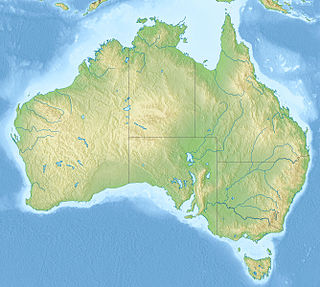 W
WThe Cattamarra Coal Measures is an Early Jurassic geological unit in Western Australia.
 W
WThe Cerrejón Formation is a geologic formation in Colombia dating back to the Middle-Late Paleocene. It is found in the El Cerrejón sub-basin of the Cesar-Ranchería Basin of La Guajira and Cesar. The formation consists of bituminous coal fields that are an important economic resource. Coal from the Cerrejón Formation is mined extensively from the Cerrejón open-pit coal mine, one of the largest in the world. The formation also bears fossils that are the earliest record of Neotropical rainforests.
 W
WThe Doig Formation is a geologic formation of middle Triassic age in the Western Canadian Sedimentary Basin. It takes the name from Doig River, a tributary of the Beatton River, and was first described in the Texaco N.F.A. Buick Creek No. 7 well by J.H. Armitage in 1962..
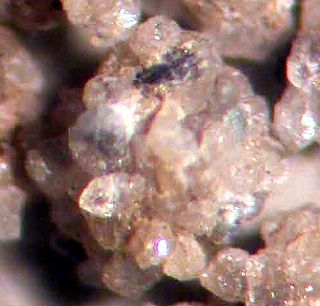 W
WThe Dunvegan Formation is a stratigraphical unit of Cenomanian age in the Western Canadian Sedimentary Basin.
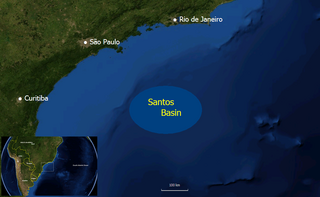 W
WThe Florianópolis Formation is a geological formation of the Santos Basin offshore of the Brazilian states of Rio de Janeiro, São Paulo, Paraná and Santa Catarina. The predominantly sandstone formation with interbedded shales and siltstones dates to the Early Cretaceous period; Albian epoch and has a thickness in the type oil well of 343 metres (1,125 ft).
 W
WThe Fruitland Formation is a geologic formation found in the San Juan Basin in the states of New Mexico and Colorado, in the United States of America. It contains fossils dating it to the Campanian age of the late Cretaceous.
 W
WThe Guadalupe Group (Spanish: Grupo Guadalupe, K2G, Ksg) is a geological group of the Altiplano Cundiboyacense, Eastern Ranges of the Colombian Andes. The group, a sequence of shales and sandstones, is subdivided into three formations; Arenisca Dura, Plaeners and Arenisca Labor-Tierna, and dates to the Late Cretaceous period; Campanian-Maastrichtian epochs and at its type section has a thickness of 750 metres (2,460 ft).
 W
WThe Guaratiba Group is a geological group of the Santos Basin offshore of the Brazilian states of Rio de Janeiro, São Paulo, Paraná and Santa Catarina. The group forms the pre-salt layer in the petroleum-rich basin and hosts the biggest oil fields of Brazil, as Tupi, Júpiter and many more. The group contains, depending on the definition, three to four formations and dates to the Early Cretaceous period; Hauterivian to Early Aptian epochs. The total thickness of the group, representing the first phase of sedimentation after the break-up of Gondwana in the Santos Basin, is estimated at 4,200 metres (13,800 ft).
 W
WThe Guarujá Formation is a geological formation of the Santos Basin offshore of the Brazilian states of Rio de Janeiro, São Paulo, Paraná and Santa Catarina. The predominantly calcarenite formation with marls dates to the Early Cretaceous period; Early Albian epoch and has a maximum thickness of 2,500 metres (8,200 ft). The formation is the second-most important post-salt reservoir rock of the Santos Basin.
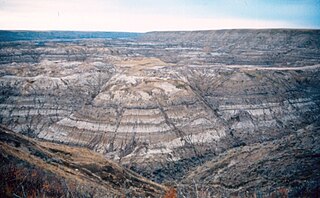 W
WThe Horseshoe Canyon Formation is a stratigraphic unit of the Western Canada Sedimentary Basin in southwestern Alberta. It takes its name from Horseshoe Canyon, an area of badlands near Drumheller.
 W
WThe Itajaí-Açu Formation is a geological formation of the Santos Basin offshore of the Brazilian states of Rio de Janeiro, São Paulo, Paraná and Santa Catarina. The predominantly shale with interbedded turbiditic sandstones formation dates to the Late Cretaceous period; Cenomanian-Maastrichtian epochs and has a maximum thickness of 2,000 metres (6,600 ft). The formation is a reservoir rock of the fields in the Santos Basin.
 W
WThe Itanhaém Formation is a geological formation of the Santos Basin offshore of the Brazilian states of Rio de Janeiro, São Paulo, Paraná and Santa Catarina. The predominantly shale formation with marls, siltstones and sandstones dates to the Early Cretaceous period; Early Albian epoch and has a maximum thickness of 1,500 metres (4,900 ft). The formation is the reservoir rock of the Tambaú Field in the Santos Basin.
 W
WThe Jimol Formation is a fossiliferous geological formation of the Cocinetas Basin in the northernmost department of La Guajira. The formation consists of calcareous lithic and fossiliferous sandstones, siltstones and mudstones. The Jimol Formation dates to the Neogene period; Burdigalian stage, Santacrucian in the SALMA classification, and has a maximum thickness of 203 metres (666 ft).
 W
WThe Juréia Formation is a geological formation of the Santos Basin offshore of the Brazilian states of Rio de Janeiro, São Paulo, Paraná and Santa Catarina. The predominantly shale with interbedded siltstones and fine sandstones formation dates to the Late Cretaceous period; Santonian-Maastrichtian epochs and has a maximum thickness of 2,000 metres (6,600 ft). The formation is a reservoir rock of the Merluza Field, the first discovery in the Santos Basin.
 W
WThe Los Molles Formation is a geologic formation of Early to Middle Jurassic age, located at northern and central part of Neuquén Basin at Mendoza Shelf in Argentina. It is overlain by the Niyeu–Lajas Formation.
 W
WThe Lotena Formation is a geologic formation dated from the Late Callovian to Early Oxfordian in the Neuquén Basin in Mendoza Province, Argentina. The formation, first defined by Weaver in 1931 and named after Cerro Lotena, consists of fluvial conglomerates, calcareous sandstones and marine limestones and shales. The Lotena Formation is overlain by the La Manga Formation and overlies the Lajas Formation of the Cuyo Group. Initially, the fossil find of the pterosaur Herbstosaurus pigmaeus was reported from the formation, but this fossil was found in the younger Vaca Muerta. The formation is a reservoir rock in the Neuquén Basin.
 W
WThe Macarao Formation is a geological formation of the Cocinetas Basin in the northernmost Colombian department of La Guajira. The formation consists of foraminifera-rich fine to medium grained calcareous sandstones intercalated with calcareous siltstones, cross-cut by veins of gypsum. The 253 metres (830 ft) thick Macarao Formation dates to the Paleogene period; Middle to Late Eocene epoch, corresponding to the Divisaderan in the South American land mammal ages (SALMA).
 W
WThe Marambaia Formation is a geological formation of the Santos Basin offshore of the Brazilian states of Rio de Janeiro, São Paulo, Paraná and Santa Catarina. The predominantly shale and marl formation dates to the Tertiary period and has a maximum thickness of 2,700 metres (8,900 ft). The formation is a seal and reservoir rock of the Atlanta and Oliva Fields in the Santos Basin.
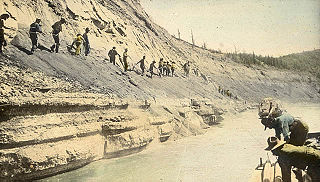 W
WThe McMurray Formation is a stratigraphic unit of Early Cretaceous age of the Western Canada Sedimentary Basin in northeastern Alberta. It takes the name from Fort McMurray and was first described from outcrops along the banks of the Athabasca River 5 kilometres (3.1 mi) north of Fort McMurray by F.H. McLearn in 1917. It is a well-studied example of fluvial to estuarine sedimentation, and it is economically important because it hosts most of the vast bitumen resources of the Athabasca Oil Sands region.
 W
WThe Niobrara Formation, also called the Niobrara Chalk, is a geologic formation in North America that was deposited between 87 and 82 million years ago during the Coniacian, Santonian, and Campanian stages of the Late Cretaceous. It is composed of two structural units, the Smoky Hill Chalk Member overlying the Fort Hays Limestone Member. The chalk formed from the accumulation of coccoliths from microorganisms living in what was once the Western Interior Seaway, an inland sea that divided the continent of North America during much of the Cretaceous. It underlies much of the Great Plains of the US and Canada. Evidence of vertebrate life is common throughout the formation and includes specimens of plesiosaurs, mosasaurs, and pterosaurs as well as several primitive aquatic birds. The type locality for the Niobrara Chalk is the Niobrara River in Knox County in northeastern Nebraska.
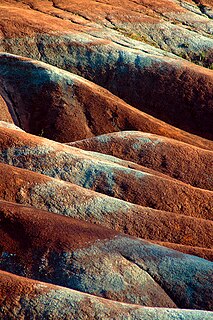 W
WThe Queenston Formation is a geological formation of Upper Ordovician age, which outcrops in Ontario, Canada and New York, United States. A typical outcrop of the formation is exposed at Bronte Creek just south of the Queen Elizabeth Way. The formation is a part of the Queenston Delta clastic wedge, formed as an erosional response to the Taconic Orogeny. Lithologically, the formation is dominated by red and grey shales with thin siltstone, limestone and sandstone interlayers. As materials, comprising the clastic wedge, become coarser in close proximity to the Taconic source rocks, siltstone and sandstone layers are predominant in New York.
 W
WThe Seca Formation is a Late Eocene geologic formation of the Progreso Basin in southwestern Ecuador. The shales of the formation have provided fossils of the marine snake Pterosphenus sheppardi.
 W
WThe Siamaná Formation is a fossiliferous geological formation of the Cocinetas Basin in the northernmost department of La Guajira. The formation consists of conglomerates and limestones. The Siamaná Formation dates to the Paleogene period; Middle to Late Oligocene epoch, corresponding to the Deseadan in the SALMA classification.
 W
WThe Spearfish Formation is a geologic formation, originally described from the Black Hills region of South Dakota, United States, but also recognised in North Dakota, Wyoming, Montana and Nebraska. It is a heterogeneous red bed formation, commonly with siltstone and gypsum low in the formation and sandstone and shale higher up. Other rock types include claystone, conglomerate, dolomite, and oil shale. It is typically regarded as Permian–Triassic in age, although its original description included Jurassic rocks.
 W
WThe Uitpa Formation is a fossiliferous geological formation of the Cocinetas Basin in the northernmost department of La Guajira. The formation consists of calcareous mudstones interbedded with lithic sandstones. The Uitpa Formation dates to the Neogene period; Aquitanian to Burdigalian stages, corresponding to the Colhuehuapian in the SALMA classification, and has a maximum thickness of 230 metres (750 ft).
 W
WThe Une Formation is a geological formation of the Altiplano Cundiboyacense, Eastern Ranges of the Colombian Andes. The predominantly sandstone formation dates to the Middle Cretaceous period; Albian to Cenomanian epochs and has a maximum thickness of 1,100 metres (3,600 ft).
 W
WThe Vaca Muerta Formation, commonly known as Vaca Muerta is a geologic formation of Late Jurassic to Early Cretaceous age, located in the Neuquén Basin in northern Patagonia, Argentina. It is well known as the host rock for major deposits of shale oil and shale gas.
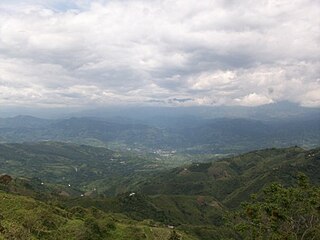 W
WThe Villeta Group is a geological group of the Eastern Ranges of the Colombian Andes, to the west of the Altiplano Cundiboyacense. The group, a sequence of shales, limestones and sandstones, is subdivided into various formations; Conejo, La Frontera, Simijaca, Hiló, Pacho, Chiquinquirá, Capotes, Socotá, El Peñón, and Trincheras, and dates to the Cretaceous period; Aptian-Coniacian epochs. The group stretches out across four departments, from Huila in the south, through Cundinamarca and Boyacá to southern Santander in the north. The upper part of the Villeta Group is time-equivalent with the La Luna Formation of the Middle Magdalena Valley (VMM) and Sierra Nevada del Cocuy, the Oliní and Güagüaquí Groups of the Guaduas-Vélez synclinal and the Chipaque Formation of the Altiplano Cundiboyacense. The lower part has been correlated with the Simití, Tablazo and Paja Formations of the VMM, the upper Tibasosa, Une and Fómeque Formations of the Altiplano Cundiboyacense and the Capacho, Aguardiente, Tibú-Mercedes and upper Río Negro Formations of the Sierra Nevada del Cocuy.
 W
WThe Wasatch Formation (Tw) is an extensive highly fossiliferous geologic formation stretching across several basins in Idaho, Montana Wyoming, Utah and western Colorado. It preserves fossils dating back to the Early Eocene period. The formation defines the Wasatchian or Lostcabinian, a period of time used within the NALMA classification, but the formation ranges in age from the Clarkforkian to Bridgerian.
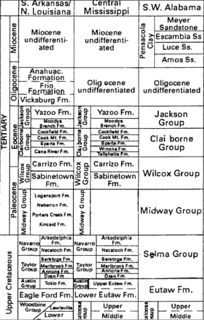 W
WThe Wilcox Group is an important geologic group in the Gulf of Mexico Basin and surrounding onshore areas from Mexico and Texas to Louisiana and Alabama. The group ranges in age from Paleocene to Eocene and is in Texas subdivided into the Calvert Bluff, Simsboro and Hooper Formations, and in Alabama into the Nanafalia and Hatchetigbee Formations. Other subdivisions are the Lower, Middle and Upper Wilcox Subgroups, and the Carrizo and Indio Formations.